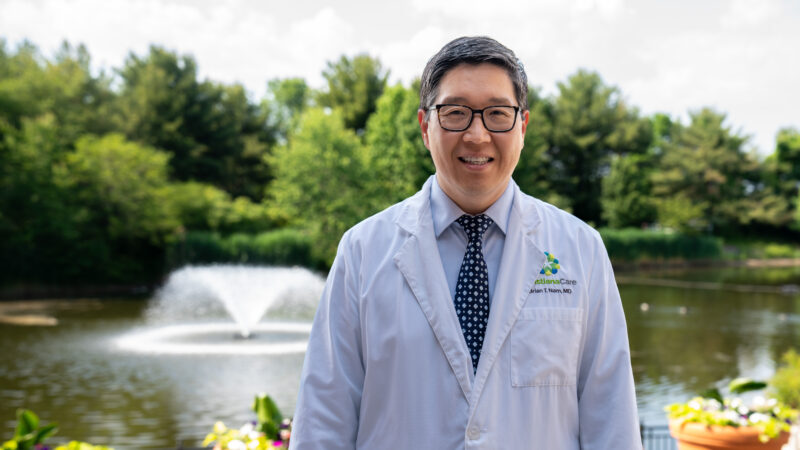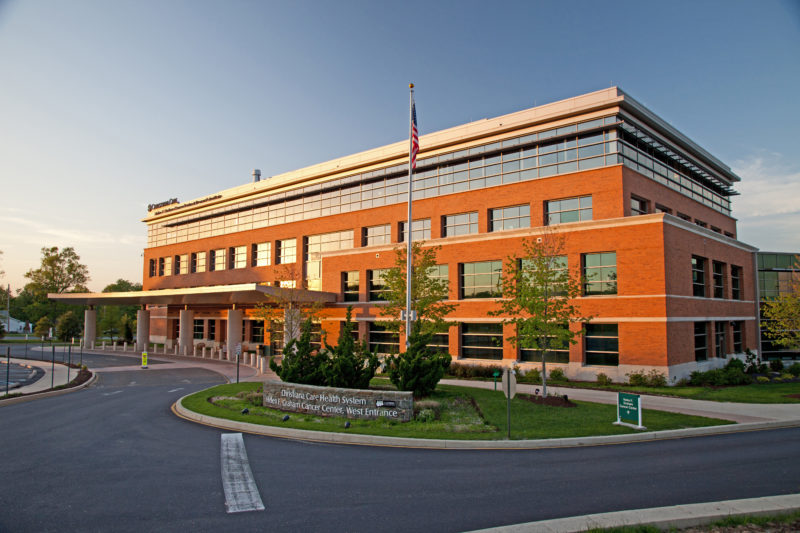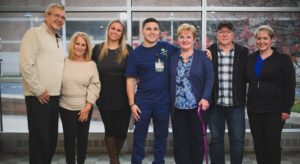Most afternoons, Linda Carrasco could be found on the patio, enjoying a cigarette break from maintenance work at her Florida apartment complex.
“I was a smoker for 50 years and wasn’t ready to quit,” she said.
“My life changed when my doctor ordered a lung screening CT scan. Now I was facing cancer and couldn’t work. I was really stuck between a rock and a hard place.”
Not only was Carrasco faced with finding more affordable housing out of state, she needed to find the right place for treating her lung cancer. Her search last year put her on the fast path to recovery at the Helen F. Graham Cancer Center & Research Institute.
The Graham Cancer Center is an NCI-Clinical Oncology Research Program following the strictest standards set by the National Cancer Institute. It is one of the busiest for minimally invasive, lung-sparing surgery.

“We are a high-volume center for lung tumor removals and nearly half of those use minimally invasive, lung-sparing procedures,” said Brian Nam, M.D., director of Robotic Thoracic Surgery at the Graham Cancer Center.
“Our goal is to remove all the lung cancer while sparing as much healthy lung tissue as possible. This means less pain, fewer complications and a quicker recovery for our patients.”
Better breathing, better quality of life
Carrasco’s Stage 1 lung cancer made her a good candidate for a procedure called a segmentectomy of the lung. Unlike other methods where more lung tissue is removed, Nam and his team were able to take out her tumor with only a small segment of her lower left lobe, while leaving the rest of her lung intact.

“Large studies over several years have shown that segmentectomy to remove less healthy lung tissue is a viable option, particularly for patients whose lung cancers are smaller than two centimeters,” said Nam.
Sparing healthier lung tissue means more lung capacity to breathe better after surgery and better quality of life, especially for patents with decreased lung function.
“Now we can offer surgery to more patients who might not have been candidates before,” Nam said, such as patients with larger tumors or who have had a previous lung surgery.
Incisions the size of a fingertip
“The team at the Graham Cancer Center is five-star.”
— Linda Carrasco
What is more, Dr. Nam and his team are experts in minimally invasive techniques including video-assisted thoracic surgery and robotic-assisted surgery using the latest daVinci® Robotic Surgical System, available only in Delaware at the Graham Cancer Center,
“Performing Linda’s surgery robotically gave us a significant advantage over open thoracotomy or even laparoscopic surgery,” Nam said.
With robotics, Nam was able to do Linda’s very complex surgery though a few small incisions, each about the size of a fingertip.
Using highly flexible robotic micro tools and 3-D visualization, he was able to see and work inside her chest without the need for a large incision or spreading the ribs apart to reach the lung.
Back home in two days
Carrasco was able to recover more quickly with less pain and potentially fewer post-surgical complications.
After just two days in recovery, she was ready for discharge home to her new apartment in Wilmington, Delaware.
“Dr. Nam is awesome, and the team at the Graham Cancer Center is five-star, especially my cancer nurse navigator and my social worker,” she said.
Oncology Nurse Navigator Nattallie Masso, MSN, RN, and Senior Social Worker Elizabeth Cobos, LMSW, LSW, worked long-distance for several months through the maze of paperwork and scheduling to help Carrasco transition from Florida to treatment and recovery in her new home state.
“Moving to Delaware and finding the Graham Cancer Center saved my life,” Carrasco said.
Click here to make an appointment at the Helen F. Graham Cancer Center & Research Institute.



